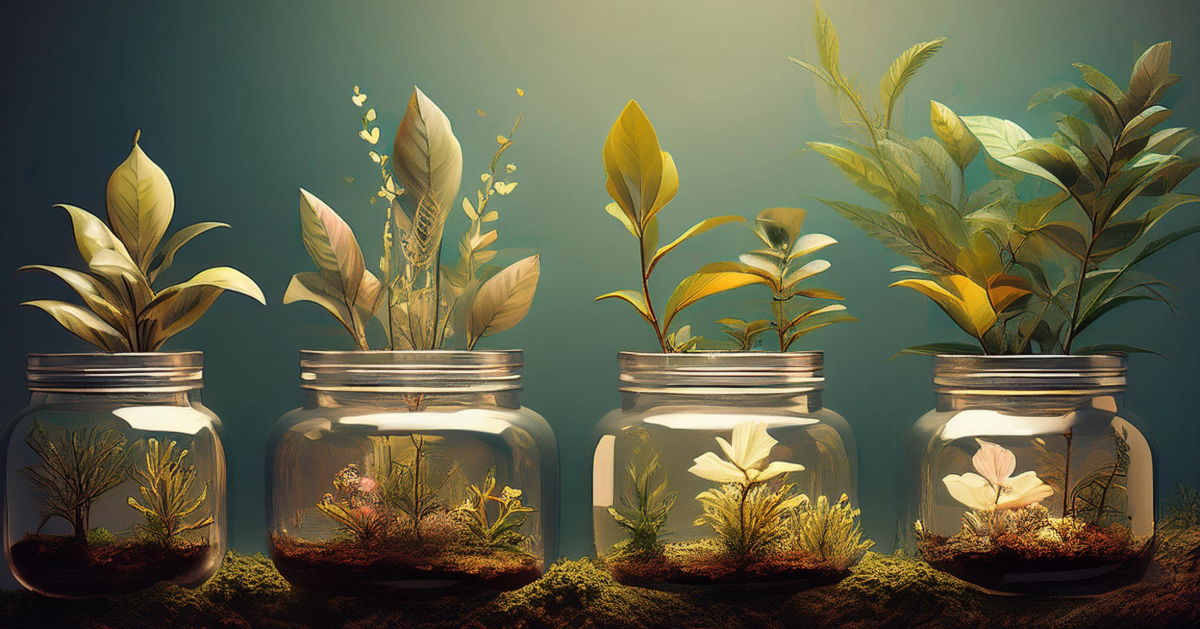4 Easy Steps to Preserve & Safeguard Your Plants
What specific harm are these insects causing to my plant? Do they consume this plant? Are they becoming bigger? What is causing the leaves to drop off so quickly? Is the plant perishing? Do the roots have rot? Many inquiries, correct?
Taking care of indoor plants or gardens is an excellent pastime. However, a number of environmental variables as well as insufficient human attention have the ability to harm plants and result in death or stunted development. It’s essential that your arm yourself with the knowledge necessary to preserve and maintain your plants if you want to have beautiful flowers and plants that withstand the changing of the seasons. Expert gardener Vinayak Garg outlines eight easy strategies to safeguard your plants and maintain their health in any weather.
3 General Plant Care Tips for Increasing Your Plant’s Life
Safeguard Your Plants.
1. Keep the plants covered
Since not all plants can be kept indoors during certain seasons, such as the winter, various plants have varied demands. If plants are kept covered throughout this season, they can be safeguarded even if they cannot be moved inside. Old blankets, drop cloths, and tarps are some examples of materials that can shield plants from frost, even if they cannot resist below-freezing temperatures. In the winter, keep in mind that plants still require exposure to air and sunshine to survive, therefore coverings will need to be taken off during the day. It is preferable to place your plants in oblique sunlight to prevent leaf burn, even on the sweltering summer days.
2. Use natural pesticides:
Many of us may be surprised to learn that we have an all-natural solution in our kitchens to safeguard our plants. In addition to being natural, these are also devoid of dangerous chemicals that frequently contaminate our surroundings. We may use affordable, natural insecticides to keep insects away from our plants, including neem oil, salt spray, onion and garlic spray, and chrysanthemum flowers. Check out the natural plant fertilizers offered by Lazy Gardener.
3.Retain the indoor plants
You could try bringing that warm-weather plant indoors, especially in the winter. Plants can be relocated inside the garage or another area where they will be exposed to temperatures at least 10 degrees warmer than they would be outside if space restrictions prevent them from doing this.
Potted plants should be arranged according to how much light they need; those that need the lightest should be put next to windows that face east and west, while those that don’t need as much light should be placed close to windows that face north and south. However, use caution when positioning your plants near windows, as the chilly air may have an adverse effect on them if they come into touch with a pane.
Plant Protection Tips for Varying Weather Conditions
· Defending Against Frost:
Gardens and landscapes can be destroyed by unexpected freezes. They can leave a gardener wondering what the best way is to cover and prevent plants from dying, as well as how to keep plants safe from freezing. To do this, there are several ways to go. In order to keep plants, warm throughout the night when there is a frost, gardeners can install a heat source with a covering frame. It is important to make sure that these sources are not placed too close to the plants, since this might harm the plants. In addition, gardeners can maintain the soil completely moist to retain heat, as opposed to using old blankets, tarps, etc., to cover the plants.
· Defending Against the Winter:
Plants are delicate creatures. The way plants react to their surroundings is influenced by variations in the weather. Bringing really fragile plants that are intolerant of chilly winds indoors during the winter is always preferable. This will shield them from the bitter winter winds both during the day and at night and provide them with a somewhat warmer environment. Another way that gardeners may help plants is by insulating them with mulch or hay. This retains moisture and heat, protecting the roots.
· Keeping dry under intense rains:
Planting is best done in the monsoon season. It provides a low temperature and high humidity, which allows the roots to grow. But it is also the time of year when we need to give our plants extra attention. There are other things to monitor, such as fertilization and watering. During this period, overwatering might harm the roots. In a similar vein, root rotting can also result from standing water without enough drainage holes. Newly planted saplings should be well cared forte prevent them from being uprooted, as they are frequently damaged by heavy rains.
· Keeping cool during the summer:
Summertime heat waves frequently scorch the leaves, causing them to become entirely dry and brown. We must thus take the appropriate safety measures to keep them safe. This is where mulch can rescue the plant’s life. It reduces the need for upkeep, retains moisture, lessens evaporation, and encourages robust plant development. Plant protection from extreme heat can also be achieved by watering in the morning, using a shade cloth, and positioning the plants to avoid direct sunlight.
Plant parents would gladly concur those indoor plants, or plant kids, not only bring color and vibrancy to our environments but also greatly enhance our mental well-being. In addition to providing friendship, light, and fresh air, they also mirror our inner well-being. Thus, in one sense or another, they serve as an excellent reminder of when and how we should take care of ourselves. When they do it with such warmth and affection, shouldn’t we also be aware of this and take deliberate steps to safeguard them?
for more informative particles click here


2 comments
Your article helped me a lot, is there any more related content? Thanks!
Your article helped me a lot, is there any more related content? Thanks!